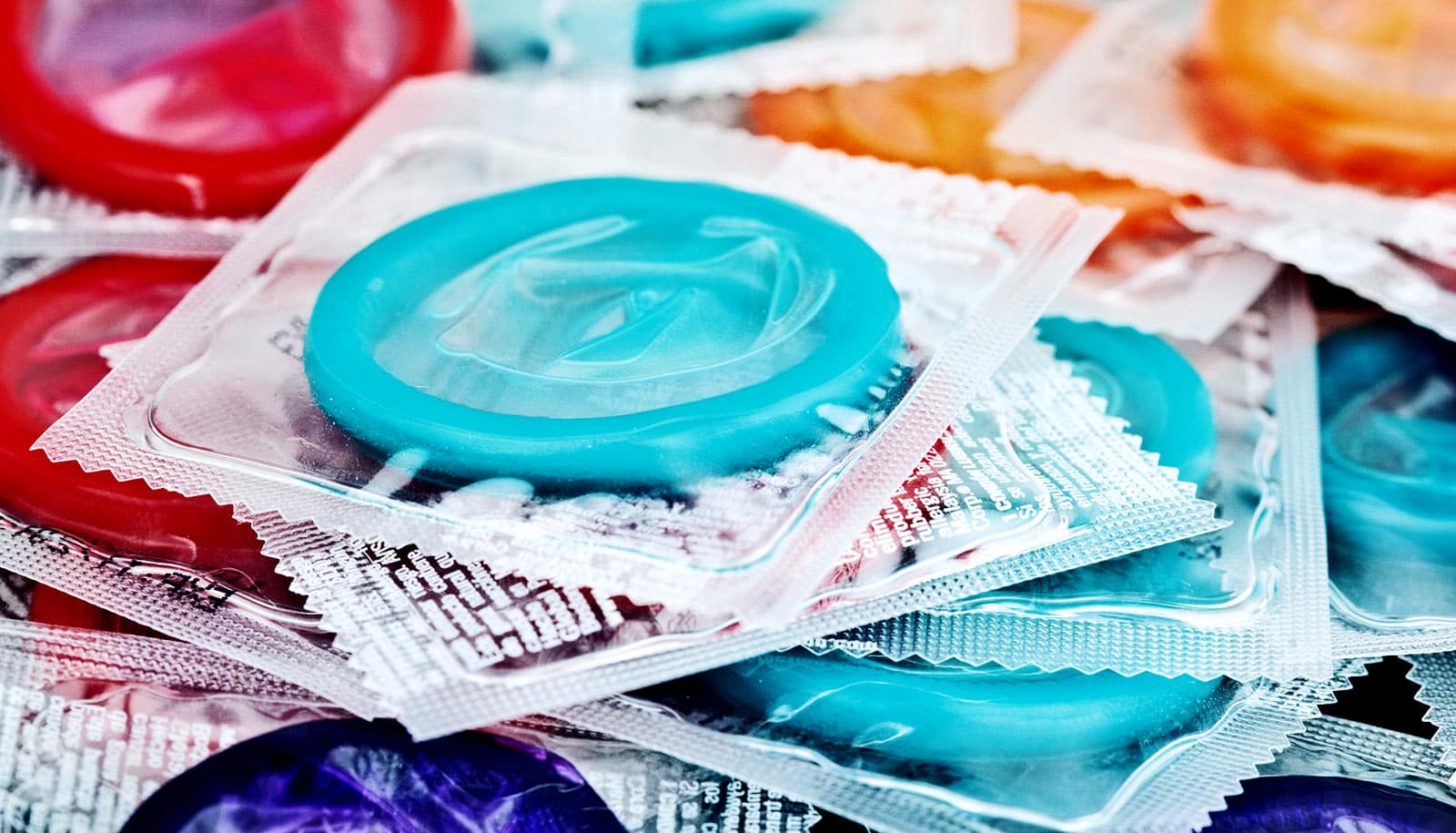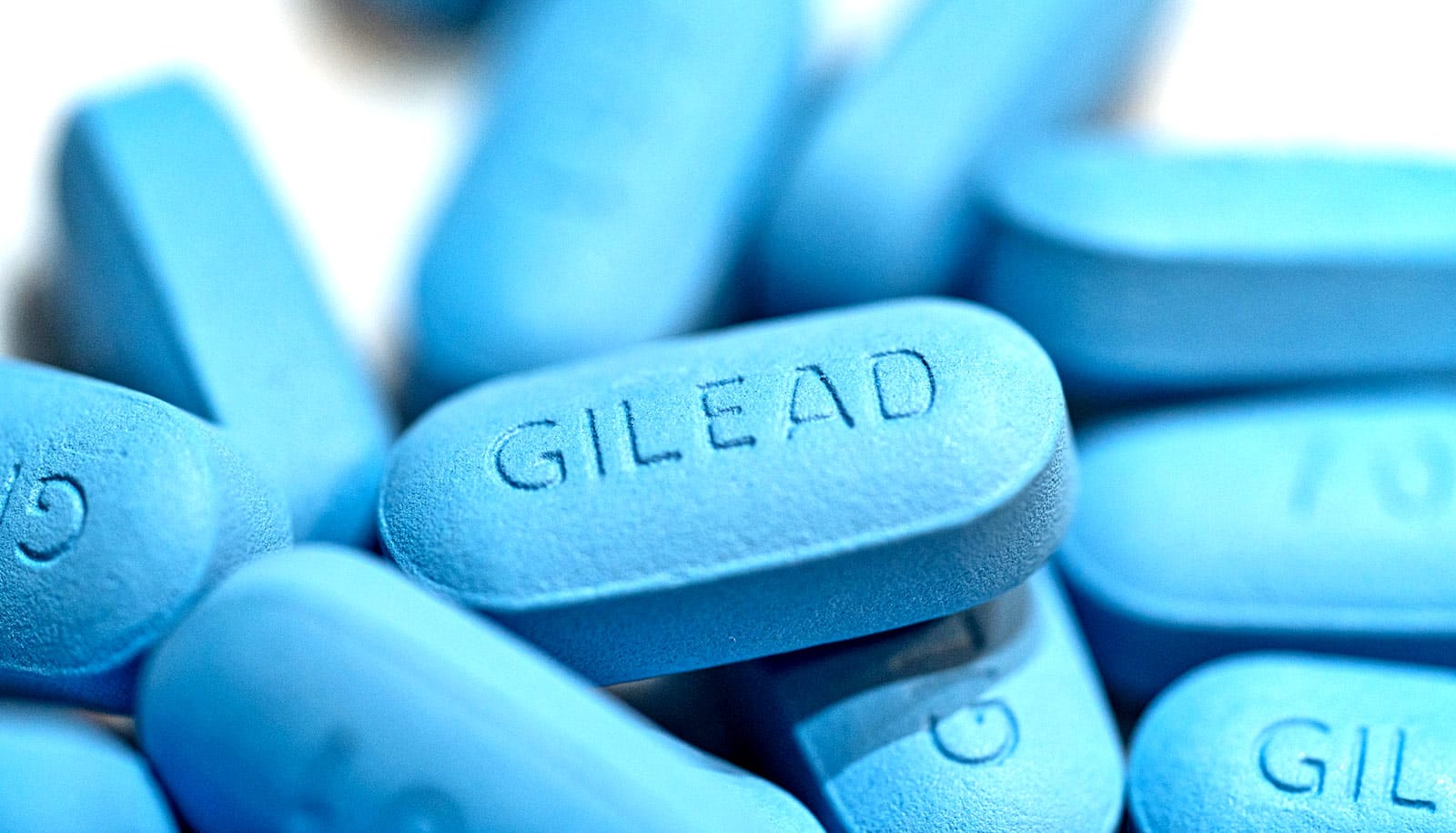Condom use has been trending downward among younger gay and bisexual men over the last decade, even when they aren’t taking pre-exposure prophylaxis, or PrEP, a new study shows.
The study, published in AIDS and Behavior, measures changes in sex without condoms among HIV-negative gay and bisexual men who are not taking PrEP.
Using data from the 2014-19 cycles of the American Men’s Internet Survey—a web-based survey of cisgender men ages 15 and older who have sex with men (MSM) –researchers found that roughly half of HIV-negative men reported using condoms at least sometimes in the last year. That was higher than the 15% of respondents who reported using PrEP.
But HIV-negative MSM who are not using PrEP seem to be not using condoms increasingly often. The study found that the proportion of these men who had sex without a condom increased 2.2% in the average year.
Rates of people who weren’t using condoms was higher among younger men and Latinos, 7.2% per year for young MSM ages 15 to 24, and 18.7% among young Latino gay and bisexual men.
Properly used condoms can prevent the spread of disease, including HIV; taking PrEP also reduces the likelihood of HIV transmission. The increase in condomless sex for men not on PrEP suggests potential new HIV transmission pathways, researchers say, and the concentration among young Latino men could expand existing health disparities.
Here, lead author Steven Goodreau, a professor of anthropology at the University of Washington, discusses the study, health equity, and the importance of continued education about the benefits of using condoms during sex:
What are the barriers to PrEP uptake? Why is it important to not only remove those barriers but to also promote condom usage?
Different things work for people in different circumstances and times of their lives. PrEP has many benefits. It’s something that doesn’t have to happen in the moment, something an individual can decide on instead of having to negotiate with a partner.
Some people really don’t like condoms and aren’t going to use them, so PrEP provides another option for them. But like most pharmaceutical interventions, it means people need to know about it and be continuously tied to the health care system. There are all sorts of things happening in people’s lives—from unstable housing to dealing with mental health and substance use—that make taking a pill every day not the easiest thing to do.
So, PrEP has positives but also challenges. The same with condoms. They’re far cheaper and much easier to access. For some people the lack of daily regimen is a plus. They prevent a much wider range of sexually transmitted infections, not just HIV. But they also take their own form of planning and negotiation. In the end, I see both as key to lowering HIV transmission rates.
Can you talk about the connection between condom promotion and health equity?
The sense I have as a gay man working in public health research is that there’s a prevailing idea that everybody already knows about condoms and understands them, so there’s not much need to do any kind of further promotion anymore. There’s also this idea that they’re so readily available to everybody, that there isn’t much of an equity issue involved. In contrast, PrEP involves interacting with the health care system, with associated costs and time and ability to navigate and feel comfortable doing so. All those things are unequal in our society, so are a clear area for concerns about equity.
Our results show that a growing set of young gay and bisexual men, and especially young Latino gay and bisexual men, seem to be missing out on both interventions. And that pattern raises questions of equity.
Our study can’t say exactly why, but the pattern is clear. We must remember that every generation is starting anew with their knowledge about sexual health. If we have a generation that is coming of age when conversations about condoms that were common in the past haven’t been as present, then they aren’t starting with that broad familiarity. And if LGBTQ+ inclusive sex-ed, which covers HIV prevention for gay and bisexual men, isn’t evenly distributed in the population, then we indeed have equity concerns.
What kind of conversation do you hope this research sparks?
Before PrEP came out, HIV prevention for gay and bisexual men had condoms as a central pillar—perhaps the central pillar—for about three decades. Of course, we were all tired of talking about them. So, I get why, when PrEP came out, it was seen as a miracle and the pendulum swung in that direction.
But it’s a decade into PrEP delivery and I think it’s time to look at that and say, “Is it time for the pendulum to swing back a bit?” I’d like people to have open, honest, sincere conversations about how much condom promotion we’ve been doing. What messages have we been putting out? What haven’t we been doing, and why? Is it because there aren’t folks who would benefit from those conversations, or are we just tired of having them? I hope for more conversations among folks at every level: federal, state, and local health programs, community organizations, and within communities themselves.
What strategies could potentially improve condom promotion?
Some folks in public health think that gay and bisexual men just don’t want to hear about condoms anymore. That’s certainly true for some, but I don’t think it’s as broadly true as we assume. The first step is just a shift in that thinking.
Beyond that, LGBTQ+ inclusive sex education is extremely important. Only about half of US high schools have it, and that’s a key first place for young, gay, and bisexual men to learn about the different prevention methods and what would work for them given where they are in life. This is a time when the barriers to PrEP are especially high for many people, so making sure that condoms are seen as a valuable and viable option is especially important.
Some dating apps that men use to find partners put the options for PrEP use or viral suppression upfront on the profile, and then the field indicating whether you want to use condoms either doesn’t exist or it isn’t nearly as prominent. That seems like a huge missed opportunity, both to actually share information condom use and to send the message that condoms are on par with these other sexual health tools.
It also used to be easier to find condoms in every bar and club catering to gay men. They’re still there some of the time, but not as consistently, and there’s rarely any material explaining and promoting them.
In the end, it’s key to remember that things like condom use are highly subject to social norms—many people use what they see and hear from their peers and beyond as a guide for their own decisions. Even just a little bit more attention to the topic may help to get many of those conversations started again.
Additional coauthors are from the University of Washington, the Centers of Disease Control and Prevention (CDC), and Emory University.
The CDC and the National Institute of Health funded the work.
Source: Lauren Kirschman for University of Washington



